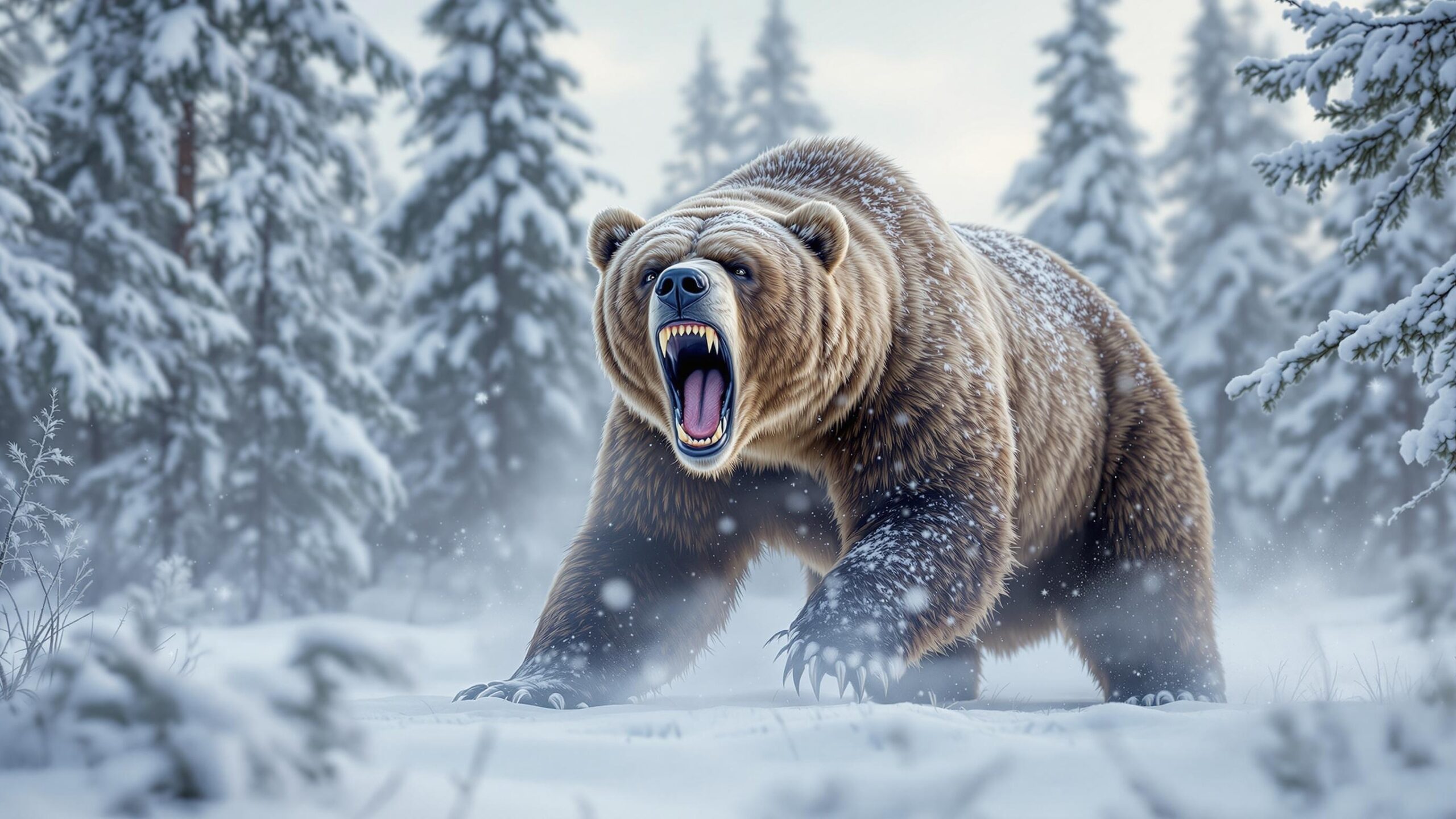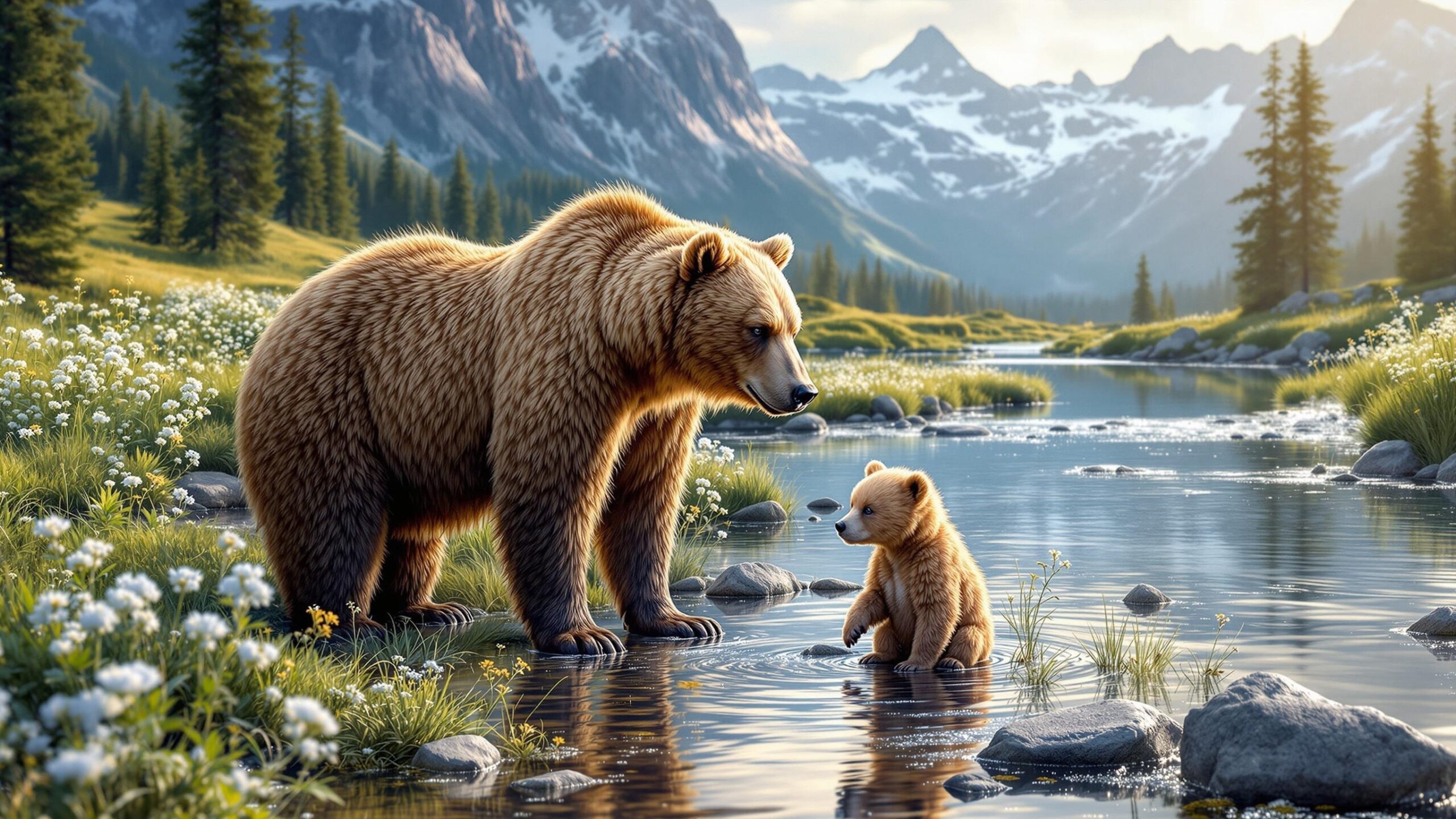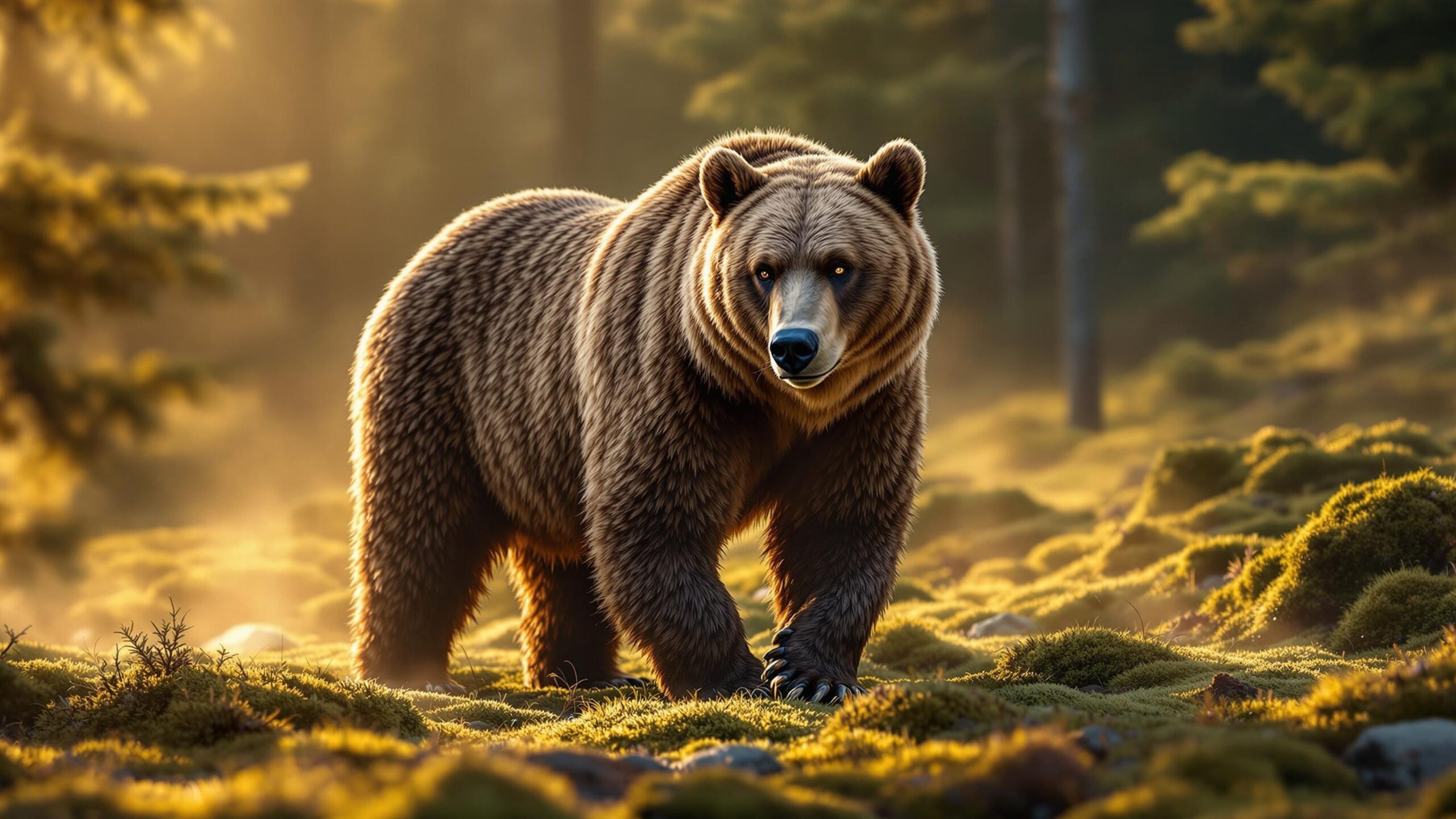Eurasian Brown Bear: The Icon of Europe’s Wild Heart
The Eurasian brown bear (Ursus arctos arctos), a subspecies of the widely distributed brown bear, stands as one of the most iconic and awe-inspiring creatures of the European wilderness. Towering in stature yet elusive in behavior, this majestic mammal has long held a revered place in folklore, ecology, and modern conservation discussions. Found across a vast range from Western Europe to Siberia, the Eurasian brown bear serves as both a keystone species and a symbol of untamed nature.
Though much feared and often misunderstood, the Eurasian brown bear plays a vital role in the ecosystems it inhabits, maintaining balance in forest environments through its interactions with prey, vegetation, and even carrion. Despite centuries of human encroachment and historical persecution, these resilient animals have persisted, adapting to changing landscapes and even reclaiming portions of their former territories. In this detailed exploration, we delve into the life of the Eurasian brown bear—from its physical characteristics and behavior to its ecological significance and conservation outlook.
Physical Characteristics: Strength Wrapped in Fur
The Eurasian brown bear is one of the largest carnivores in Europe, though like other brown bear subspecies, it is technically an omnivore. Adult males typically weigh between 300 and 550 kilograms (660 to 1,200 pounds), while females are noticeably smaller, averaging 150 to 300 kilograms (330 to 660 pounds). Height at the shoulder can reach up to 1.5 meters (about 5 feet), and when standing upright, these bears often exceed 2 meters (6.5 feet) in height.
Their dense coat, ranging from tawny brown to nearly black, serves as insulation against the harsh climates of northern Europe and Russia. The bear’s muscular build is most noticeable in its powerful forelimbs, equipped with long claws used for digging, climbing, and foraging. Its distinctive shoulder hump—a hallmark of the brown bear family—contains muscle mass that aids in powerful upper body movement. Though their appearance is undeniably formidable, Eurasian brown bears are typically shy and elusive in nature, preferring to avoid humans when given the chance.
Distribution and Habitat: Masters of Diverse Landscapes
The Eurasian brown bear boasts one of the broadest ranges of any terrestrial mammal in Europe and Asia. Historically, they were present throughout most of Europe and northern Asia, but their numbers have significantly diminished due to habitat loss and human persecution. Today, they are primarily found in Russia, which houses the largest population, as well as in parts of Scandinavia, the Carpathian Mountains, the Balkans, and isolated pockets in Western Europe including the Pyrenees and Alps.
These bears are highly adaptable and can thrive in a variety of habitats—from dense deciduous forests and alpine meadows to boreal woodlands and tundra. However, they prefer areas with dense vegetation cover, access to fresh water, and minimal human disturbance. Remote mountainous regions provide an ideal refuge for these secretive giants.
Diet and Foraging Behavior: Omnivorous Opportunists
Despite their carnivorous classification, Eurasian brown bears are opportunistic omnivores with a remarkably diverse diet. Depending on the season and available resources, their menu may include fruits, berries, roots, grasses, nuts, fungi, and insects. In spring, they may consume carrion or hunt small mammals to regain weight lost during hibernation. In autumn, hyperphagia—a state of excessive eating—drives them to consume up to 20,000 calories per day in preparation for the winter months.
In areas with access to fish, particularly salmon-rich rivers, bears will supplement their diet with protein-rich catches. Bears are also known to raid beehives and agricultural crops such as oats, corn, and apples, occasionally bringing them into conflict with farmers. This dietary flexibility has been a key factor in their survival, allowing them to endure the seasonal extremes of their habitats and the pressures of a changing environment.
Behavior and Social Structure: Solitary but Strategic
Eurasian brown bears are solitary by nature, except during the mating season and when mothers are raising cubs. They maintain large territories, which can span up to several hundred square kilometers, depending on food availability and population density. Territories may overlap, particularly in areas with abundant resources, but interactions are typically avoided unless breeding or disputes arise over food.
Communication occurs primarily through scent marking, vocalizations, and body language. Bears mark trees by scratching and rubbing, signaling their presence to others. During mating season, which generally takes place from May to July, males will roam vast distances in search of receptive females. After mating, the male plays no role in raising the offspring.
Cubs are born during hibernation, typically in January or February, inside dens excavated into hillsides or beneath tree roots. A typical litter consists of one to three cubs, which remain with their mother for up to two and a half years. During this time, the mother provides intensive care, teaching them essential survival skills such as foraging and avoiding predators—including other bears.

Hibernation: The Art of Dormant Survival
One of the most fascinating aspects of the Eurasian brown bear’s life is its winter hibernation. In preparation for the cold months, bears enter a state of torpor—a deep sleep in which body temperature drops, heart rate slows, and metabolism dramatically decreases. This energy-saving adaptation allows them to survive without eating or drinking for several months, relying entirely on fat reserves built up during the fall.
Pregnant females give birth during this period, often nursing their cubs in the confines of the den without ever needing to leave. The den itself is a carefully selected and excavated space, insulated from harsh winter elements. Come spring, the bears emerge, leaner and ravenous, and immediately begin foraging to rebuild their strength. The exact timing of hibernation varies by location, with northern populations experiencing longer periods of dormancy than those in southern ranges.
Role in the Ecosystem: Guardians of Balance
The Eurasian brown bear is a keystone species, meaning its presence—or absence—can have cascading effects on the ecosystem. By scavenging carcasses and dispersing seeds through their droppings, bears help maintain forest health and plant diversity. Their digging and foraging activities aerate the soil, promoting nutrient cycling.
In regions where they prey on ungulates such as deer or wild boar, bears help control populations, which in turn affects vegetation patterns and forest regeneration. Even the act of predation or scavenging contributes to the natural cycle of life and death that sustains biodiversity. Moreover, the bear’s status as a top predator and umbrella species makes its conservation crucial for protecting broader habitats. Efforts to preserve bear populations often benefit entire ecosystems, safeguarding a multitude of other species in the process.
Cultural Significance: From Myth to Modern Symbol
The Eurasian brown bear holds a powerful place in the cultural heritage of many European and Asian societies. In ancient folklore, the bear was often revered as a symbol of strength, bravery, and fertility. Norse mythology, Slavic legends, and even early Celtic traditions depict bears as protectors and spirit animals, closely linked to the natural world.
Some indigenous Siberian communities regarded bears as relatives or ancestors, conducting elaborate rituals to honor their spirits. In more recent history, the bear became a symbol of national identity in countries like Russia and Finland. Today, the bear continues to inspire admiration and fascination. Its image appears in national emblems, sports teams, and even as the mascot of environmental movements. This deep-rooted cultural connection adds another layer to the importance of its conservation.
Conservation Status: Quiet Recovery with Ongoing Challenges
The Eurasian brown bear is currently classified as Least Concern by the International Union for Conservation of Nature (IUCN), owing to its large and stable population across much of its range. However, this broad designation masks significant regional variations. In Western Europe, for example, bear populations are small, fragmented, and vulnerable. The bears in the Alps, Apennines, and Pyrenees number only in the dozens, and are heavily dependent on conservation programs.
Threats to their survival include habitat fragmentation, poaching, vehicle collisions, and conflicts with livestock owners. Illegal hunting, though less common than in the past, still occurs, especially in regions with weak enforcement of wildlife protection laws. As human development continues to expand into wilderness areas, the likelihood of bear-human encounters increases, often to the detriment of the bear.
On the positive side, targeted conservation efforts have yielded some success. Programs such as habitat corridors, livestock compensation schemes, and rewilding initiatives have helped stabilize or even grow certain bear populations. Education campaigns aimed at reducing fear and misunderstanding have also improved public attitudes toward coexistence. While not out of danger, the Eurasian brown bear is a conservation success story in progress—one that demonstrates the resilience of nature when given a chance to recover.
Coexisting with Bears: A Modern Balancing Act
In regions where bears and humans share the landscape, fostering coexistence is critical. This means taking proactive steps to reduce conflicts, such as securing garbage, using bear-proof livestock enclosures, and maintaining respectful distances in the wild. In Scandinavia and parts of Eastern Europe, local communities have adopted coexistence strategies that serve as models for other regions.
Ecotourism centered around bear watching has also become a tool for promoting both conservation and local economic development. In countries like Romania and Slovenia, visitors can observe bears in their natural habitat, generating income for rural communities and increasing public support for wildlife protection. These initiatives highlight a hopeful shift—from viewing bears as threats to valuing them as part of a shared natural heritage.

The Future of the Eurasian Brown Bear
As climate change accelerates and human pressures mount, the future of the Eurasian brown bear will depend on how we manage landscapes, enforce protections, and embrace coexistence. While some populations are thriving, others teeter on the edge, and without continued effort, local extinctions remain a possibility. But there is reason for optimism. Advances in wildlife tracking, habitat modeling, and community-based conservation offer new tools for safeguarding bear populations. Collaboration between governments, scientists, conservationists, and local people is key to sustaining this iconic species.
Ultimately, preserving the Eurasian brown bear is not just about saving a single animal—it’s about protecting the wild spaces that sustain us all. In the enduring presence of these powerful creatures, we are reminded of what it means to share the earth with other life forms, to listen to the whispers of ancient forests, and to honor a legacy that stretches back thousands of years.
A Legacy of Strength and Survival
The Eurasian brown bear is more than just a formidable predator or a cultural icon—it is a living example of the richness and resilience of Europe’s natural heritage. Through centuries of persecution, environmental change, and human encroachment, the bear has endured. Today, it stands not only as a symbol of wild power but also as a beacon of what’s possible when humans choose to respect and protect the natural world.
As we look ahead, the story of the Eurasian brown bear continues to unfold—a story of survival, adaptation, and hope. By understanding and appreciating this remarkable animal, we take an important step toward a future where wild creatures and human communities thrive side by side.

